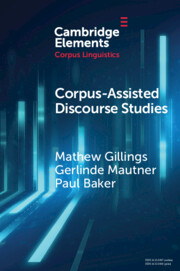Element contents
Corpus-Assisted Discourse Studies
Published online by Cambridge University Press: 20 March 2023
Summary
- Type
- Element
- Information
- Series: Elements in Corpus LinguisticsOnline ISBN: 9781009168144Publisher: Cambridge University PressPrint publication: 06 April 2023
References
- 19
- Cited by



